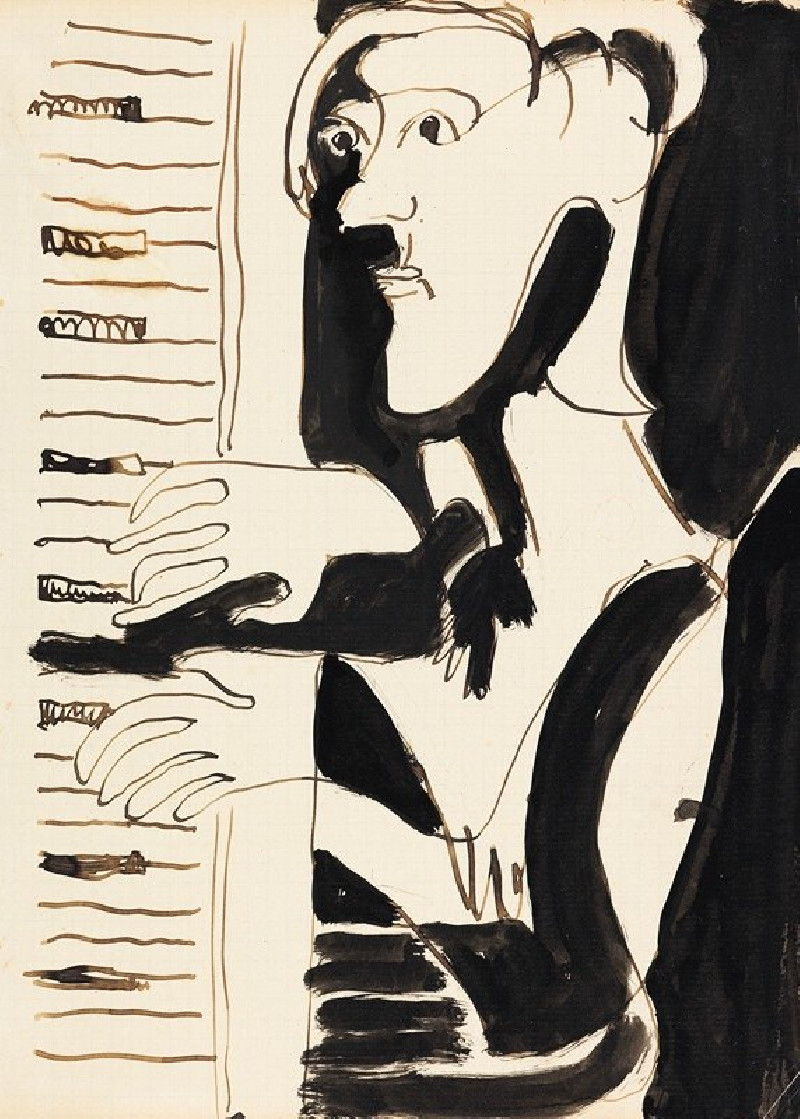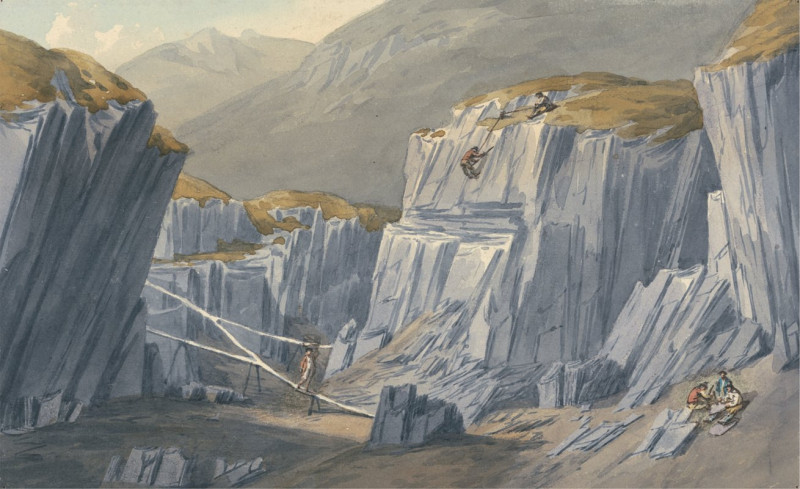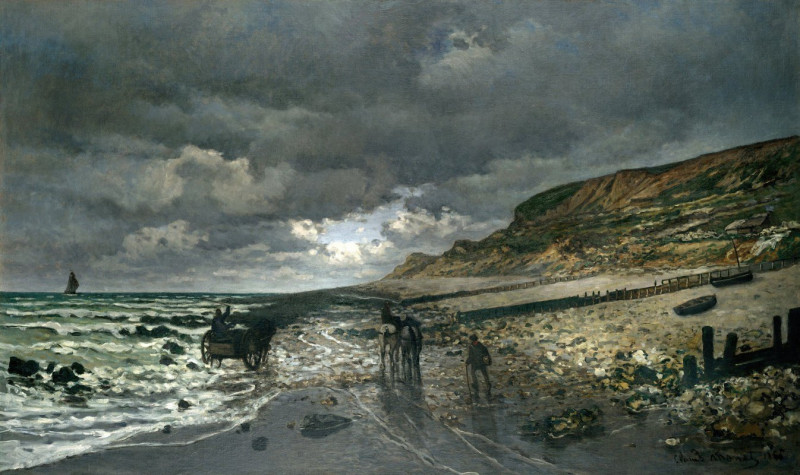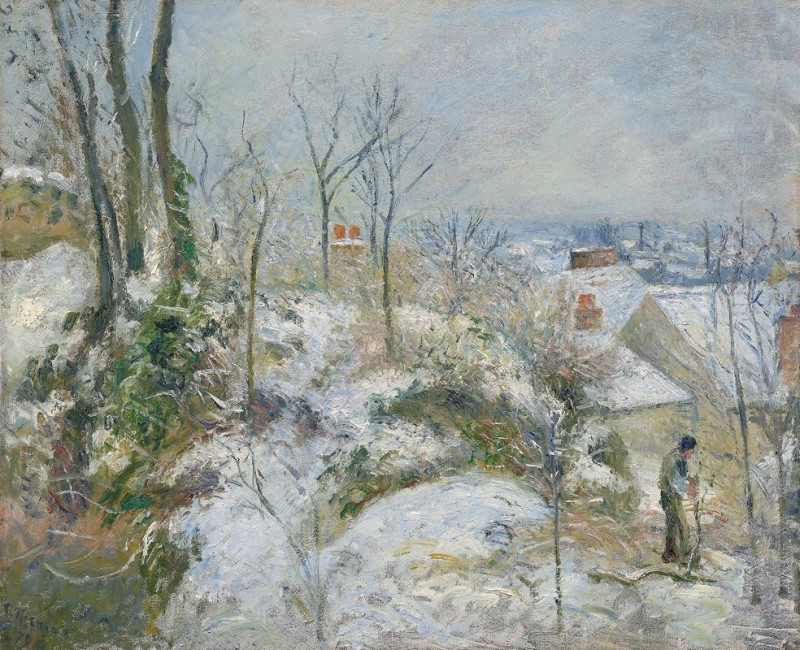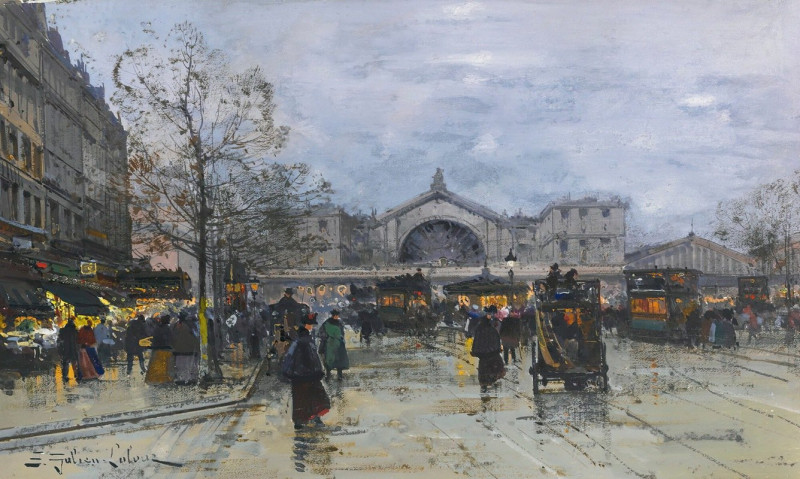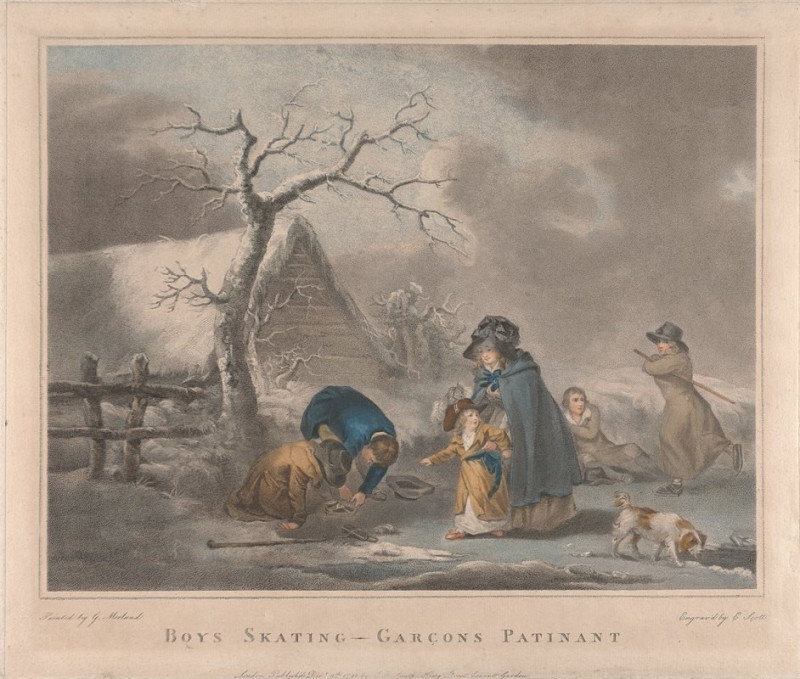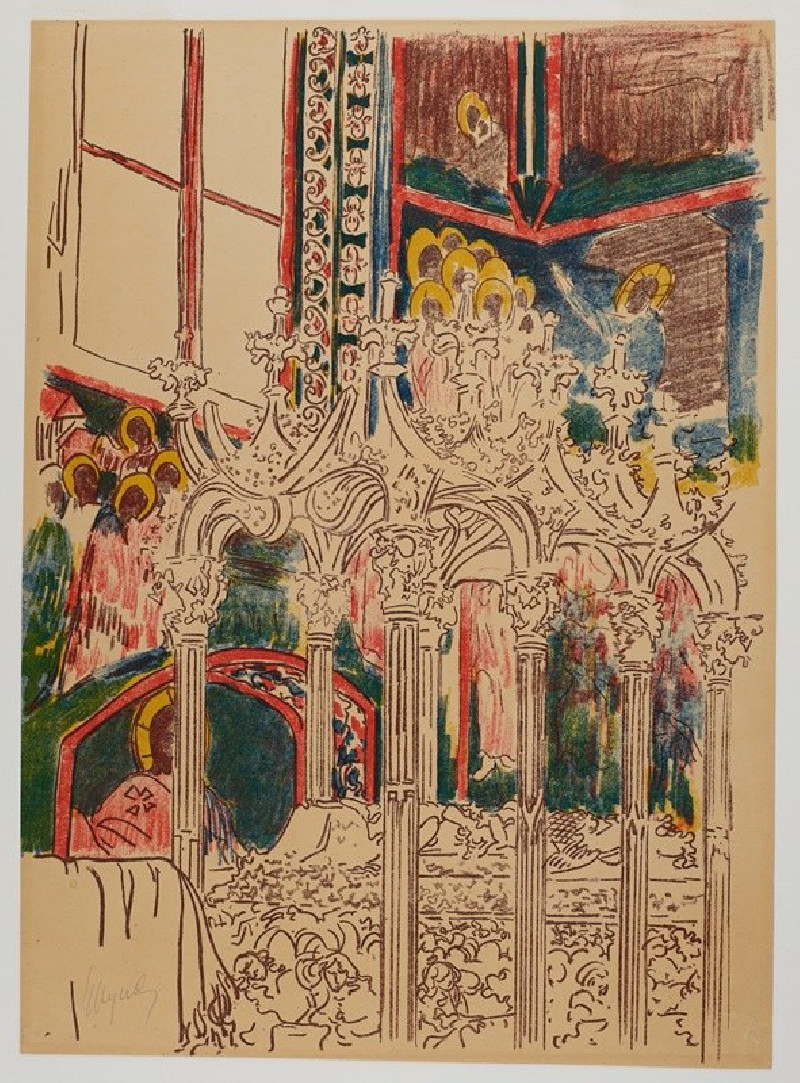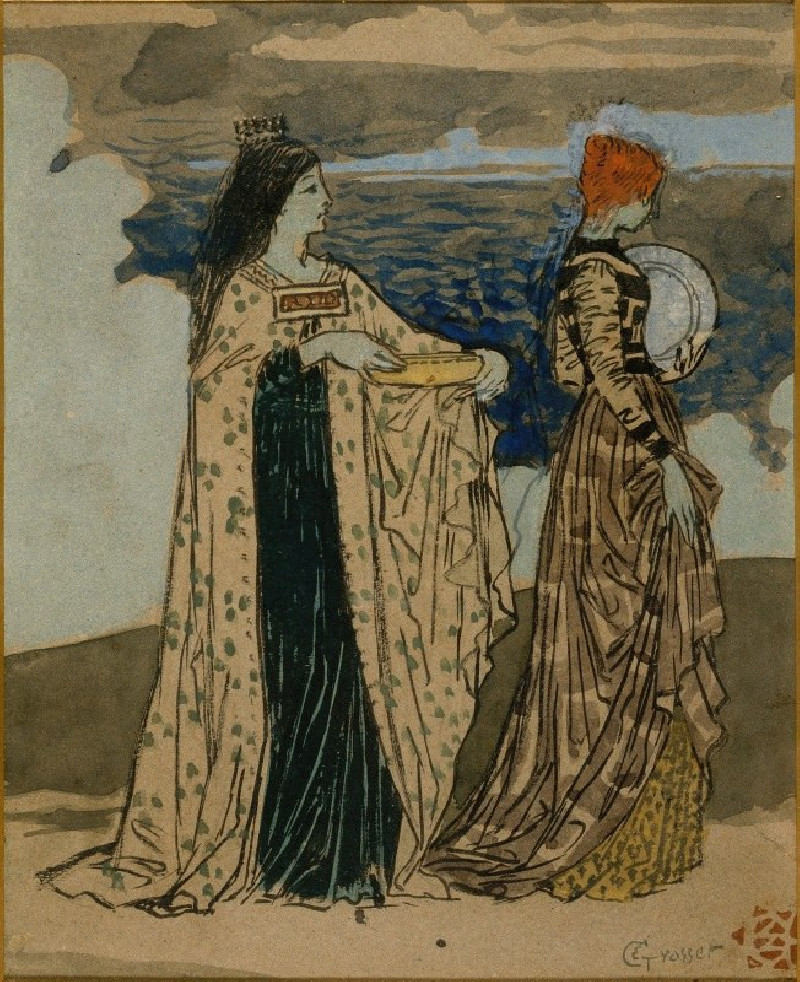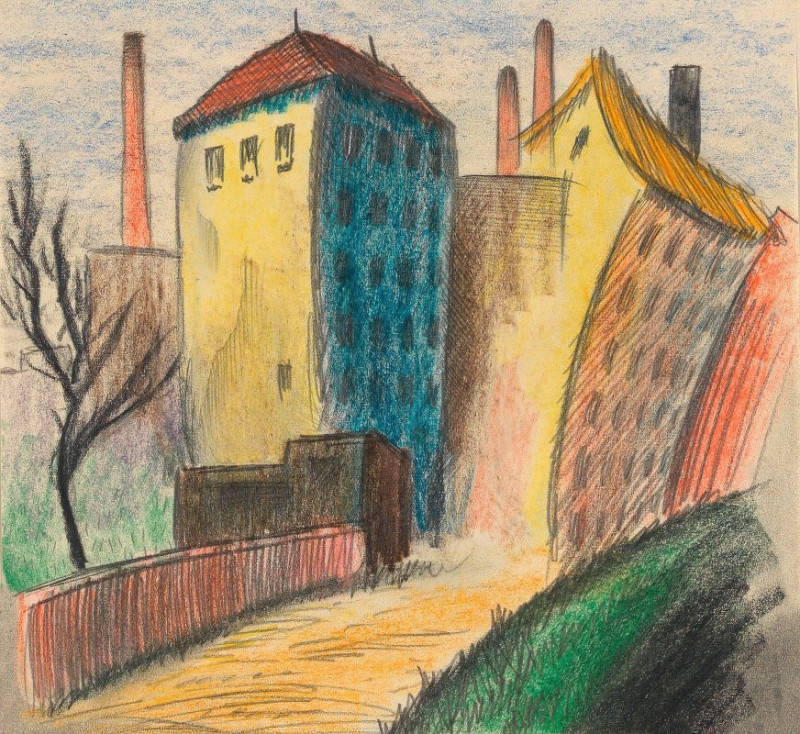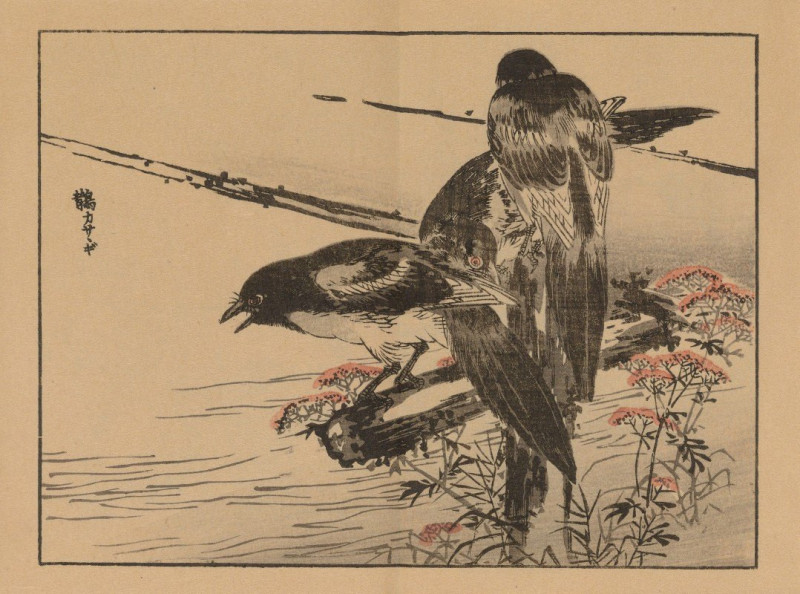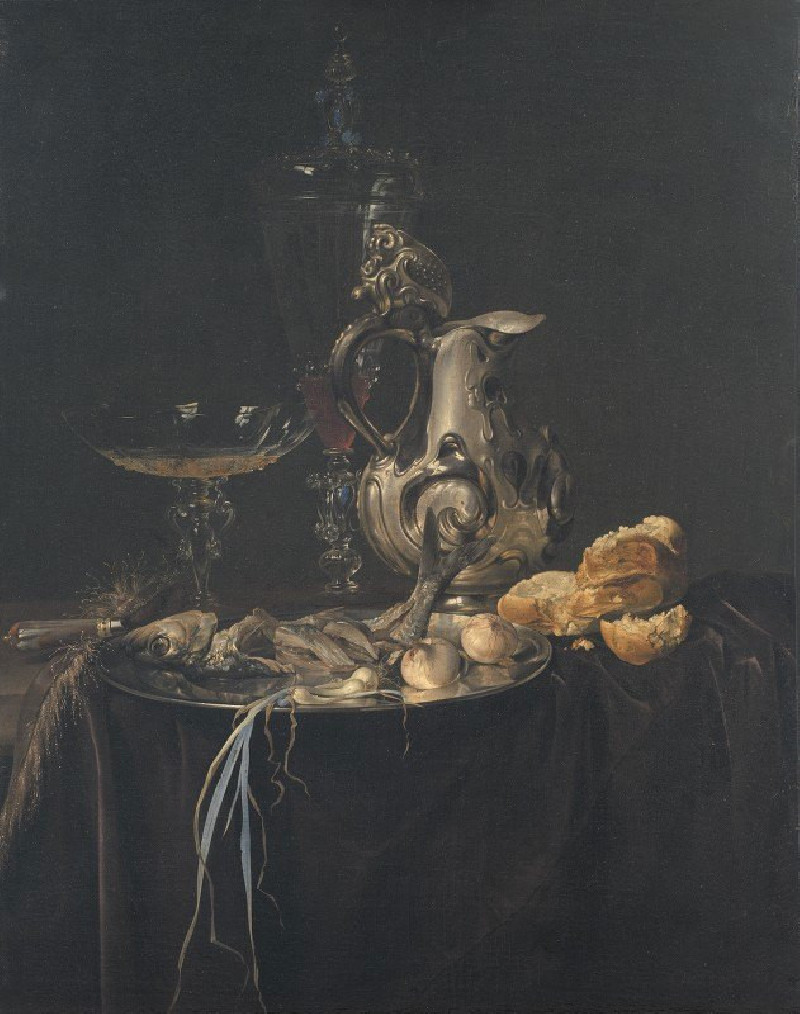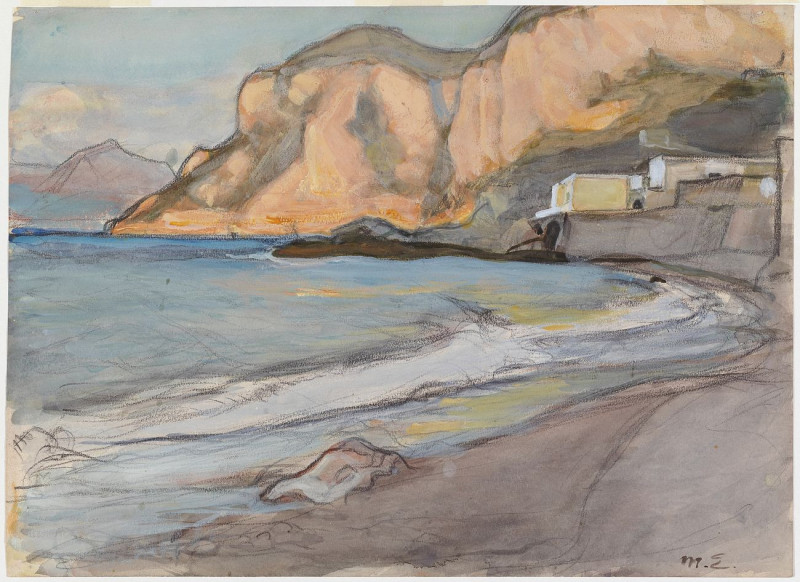Der Orgelspieler (Orgler) von Spina Julius Hembus (1930)
Technique: Giclée quality print
Recommended by our customers
More about this artwork
Ernst Ludwig Kirchner, a master of Expressionism, once again captures the dynamic essence of human activity in his painting titled "Der Orgelspieler (Orgler) von Spina Julius Hembus", created in 1930. This artwork, with its stark black and white contrast and dramatic lines, portrays an organ player engrossed in his music. The image has a vivid, almost harsh, abstraction that translates the intense concentration and passion of the musician.The organ player is depicted with exaggerated, angular features, typical of Kirchner's style which emphasizes emotion over realistic depiction. His eyes, large and slightly skewed, convey a deep absorption in his craft, while the keys of the organ are simplified yet clearly visible, suggesting the movement and rhythm inherent to playing the instrument. The bold strokes and the stark use of black ink against a plain background focus the viewer’s attention on the subject's expressive hands and the dramatic facial expression, highlighting the emotional depth of the artistic performance.This painting not only reflects Kirchner's distinctive approach to form and composition but also serves as a striking depiction of musical expression, interpreted through the lens of German Expressionism.
Delivery
Returns
Ernst Ludwig Kirchner (1880–1938) was one of the most important German Expressionist painters. He was a co-founder of Die Brücke, a group of German expressionist artists formed in Dresden in 1905. Die Brücke and Kirchner took inspiration from Vincent Van Gogh and Edvard Munch, as well as African and Oceanic art. They used woodblock printing as a medium to showcase their signature style: flat, unrealistic images with vivid colors. The recurring themes in Kirchner's artworks included exotic cultures, faraway landscapes, self-portraits, dancers and Berlin street life. His paintings and prints effectively portrayed non-European cultures despite the fact that he never traveled outside of Europe.

